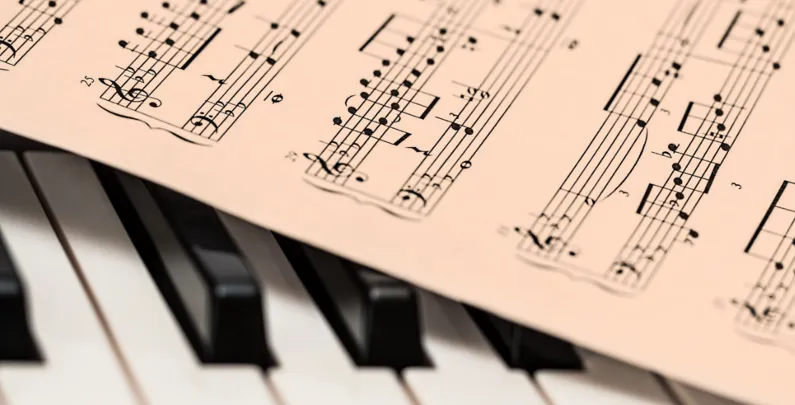Music has played an important, intricate role in our lives for thousands of years. Throughout history, and in every culture, we have listened to, performed, or responded to music through song and dance in order to bond, pass down stories, celebrate, and mourn. Music has also played a role in healing rituals around the world, making it more than an art and entertainment, but a medicine. While music has been considered “non-essential for survival,”” archaeologists have unearthed ancient musical instruments alongside materials for cooking and heating, showing that music was, and still is, a staple of human existence, and has been made an essential tool used for multiple needs.
The popularity and importance of music has not faded through the years. With the increased availability of instruments and music playing devices such as computers, tablets, smartphones, iPods, radios and more, as well as almost unlimited access to songs through the internet, music is now more popular than ever. We sing lullabies to soothe children and listen to music while driving, walking, reading or studying, and while at the mall or a restaurant. Television shows and movies carefully incorporate sounds and music to enhance the storytelling and viewing experience. Some of us spend more time listening to music than we do listening to our family or friends. For many, music is simply a form of pleasure or expression, for others it is a career. Multiple careers exist that involve working in the music industry, including musicians, music editors, audio engineers, tour managers, mix artists (also known as disc jockeys or DJs), songwriters, and more. Music is deeply embedded into our culture, careers, and lives.
While we often listen to music in the background, to help us study or focus, or to help give us energy when exercising, it often does not serve as the focus itself. We don’t often sit down and concentrate on it. This means that many of us remain unaware of how deeply music is affecting us. The effect that music has on us goes much deeper than pleasure or career, it can affect our breathing, heart rate, blood pressure, physical coordination and development, memory, attention, reasoning skills, and more. It has a profound impact on us – body, mind, and soul.
Music could be considered a specialized sub-set of sound. Sound is produced by a series of sound waves (waves of pressure). These waves are created when something vibrates, such as a slamming door, which then vibrates the air molecules. These vibrations push and pull the air, creating what is known as compression and rarefaction waves, or regions of high air pressure and then low air pressure. These waves eventually reach the eardrum, where a signal is set to the brain to interpret what we are hearing. Sound consists of: a vibrating source to set up or create the sound waves, a medium such as air to carry the waves, and a receiver to detect them.
While music is comprised of sound, most of us would agree that not all sounds are musical. The screeching of worn out breaks, the raucous call of a bluejay, or the slamming of doors all tend to sound unpleasant. This is due to regularity of the vibration and the combination of tones or notes. These sounds have a mix of different and changing frequencies and the waves tend to be jerky or irregular.
Frequency is the speed of the vibration, and it determines the pitch of the sound, or how high or low it sounds. It is measured in Hertz (Hz), with a frequency of 1 Hz referring to one wave cycle per second. As the frequency and its Hz measurement increases, the wave cycles become shorter and closer together. The amplitude or loudness of the sound is created when vibrations compress the molecules of air more forcefully and give them greater energy. It is measured in decibels (db), with 0 indicating the softest audible sound. Sounds above 120 db can begin to be painful and may damage hearing.
Everything around us is vibrating, including the human body. The human body is comprised of cells. These cells are comprised of atoms, which in turn are composed of particles, or vibrating energy. The type of frequency determines whether the wave is radio, light, heat, microwave, etc. Bruce Ainio of Tainio Technology in 1992 determined that the average frequency of the human body during the daytime is 62-68 MHz (megahertz), and a healthy body is 62-72 MHz. This frequency is outside the range (much higher) that human hearing is able to detect, or below the threshold amplitude. The average range of human hearing is 20 Hz to 20 000 Hz (or 20 kHz). Not only does the body give its own frequency, it also has its own rhythm, which can be seen in its heart beat, respiration rate, and the way in which it moves.
Music involves rhythm, melody and harmony, and musical sounds consist of vibrations that are strongly regular. It often has a predictable steady beat and logical organization and structure (such as the common verse-chorus structure). “Even sound waves that make up a single tone or an entire chord are organized in mathematical ratios” (http://blog.brainhq.com/2010/04/22/top-12-brain-based-reasons-why-music-as-therapy-works/“). It is this predictability and structure that our brain enjoys.
While music cannot exist without sound, for many people it is far more than that. Deaf musicians may not hear the beat, but they can still experience it by feeling the vibrations resonate throughout the body.
In the next blog post of this series, we will look into how these vibrations, and music as a whole, affects us physically, mentally, emotionally, and socially.


Leave a Reply
You must be logged in to post a comment.